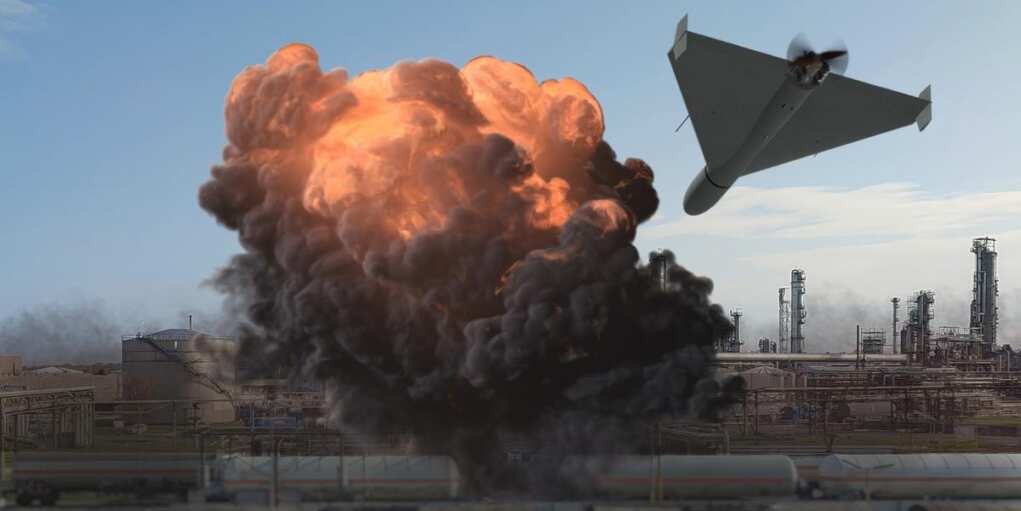Trump Preps New Punishment After Putin Rampage

President Donald Trump signaled Sunday that his administration is prepared to escalate economic pressure on Russia after Moscow unleashed its largest combined drone-and-missile barrage since the invasion began. Speaking with reporters, Trump said he is “ready” to move to a new round of penalties and indicated he plans to speak with Vladimir Putin “over the next couple of days,” even as he voiced clear displeasure with the latest strikes.
Ukrainian officials said Russia launched 810 drones alongside 13 missiles in a sweeping overnight attack that stretched air defenses and punched through in several spots. Kyiv’s air force claimed 747 drones and four missiles were neutralized, but debris and direct hits still sparked fires and damaged the Cabinet of Ministers building in the capital. Local authorities reported at least four deaths, including a mother and her infant, underscoring the human cost of Russia’s escalating pressure campaign.
The White House’s “phase two” remains under wraps, but people familiar with prior sanction toolkits say a rapid package could tighten the screws in three ways. First, by expanding financial restrictions—cutting more Russian banks off from dollar clearing, adding secondary sanctions that threaten foreign institutions doing business with designated entities, and targeting payment workarounds. Second, by striking at revenue streams—further capping oil trade via stricter maritime enforcement, hitting liquefied natural gas projects, and blacklisting shipping insurers or vessels that move sanctioned cargo. Third, by choking critical inputs—sanctioning suppliers of microelectronics, machine tools, and drone components flowing through third countries.
Trump’s public posture paired two messages: pressure and “get it done” diplomacy. He said he’s “not thrilled” by the strikes and reiterated that he wants the conflict settled, but he also emphasized that additional punishment is on the table unless Russia shifts course. In parallel, he said European leaders will come to Washington this week to discuss next steps, a signal the administration wants allied buy-in before flipping the switch on a tougher sanctions regime. Which leaders are attending—and whether Ukraine’s Volodymyr Zelenskyy will be part of the consultations—was not immediately specified.
The Kremlin, for its part, has tried to project both menace and magnanimity. Putin recently floated the idea of meeting Zelenskyy—on Putin’s turf in Moscow—while conditioning any settlement on freezing front lines and recognizing expanded Russian control in the east. Western and Ukrainian officials dismissed the offer as neither safe nor serious. On the ground, the fighting continues to belie talk of restraint: Ukrainian forces say they’ve retaken Zarichne in Donetsk and made incremental gains near key road hubs, while Russia concentrates assaults around Pokrovsk and keeps up long-range strikes designed to sap Ukraine’s air defenses and morale.
A tougher U.S. package would test two variables. The first is enforcement. Prior sanctions have dented Russia’s economy and forced costly workarounds, but a sprawling shadow fleet, gray-market traders, and third-country banks have blunted some effects. Closing those gaps requires relentless, coordinated policing—blacklisting ships, penalizing facilitators, and making examples of financial institutions that look the other way. The second is timing. Markets and Moscow adapt; sanctions bite hardest when they land fast, are clearly messaged, and are paired with follow-on actions that keep targets off balance.
Politically, Trump’s stance threads a familiar needle: keep maximum leverage while holding out the prospect of a negotiated end to the war on terms acceptable to Washington and Kyiv. The weekend’s carnage makes the sales pitch for escalation easier at home and abroad, especially as images of a burning apartment block and a shattered government complex ricochet across screens. But it also raises the stakes for his promised conversation with Putin: if diplomacy stalls and drones keep flying, the White House will face pressure to prove that “phase two” means real pain—soon.
For Ukrainians waking to air-raid sirens, the debate is academic. They need more interceptors, power restored, and strikes deterred. Whether the next U.S. move is the one that finally shifts the Kremlin’s calculus will hinge on the scope of the targets, the speed of enforcement, and how tightly Washington can lock arms with Europe to shut the remaining loopholes Russia has relied on since day one.

